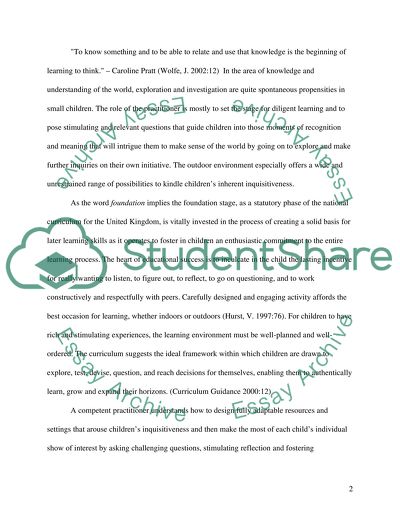Cite this document
(“How Can Play Promote the Learning of Science in the Foundation Stage Essay”, n.d.)
How Can Play Promote the Learning of Science in the Foundation Stage Essay. Retrieved from https://studentshare.org/miscellaneous/1533540-how-can-play-promote-the-learning-of-science-in-the-foundation-stage
How Can Play Promote the Learning of Science in the Foundation Stage Essay. Retrieved from https://studentshare.org/miscellaneous/1533540-how-can-play-promote-the-learning-of-science-in-the-foundation-stage
(How Can Play Promote the Learning of Science in the Foundation Stage Essay)
How Can Play Promote the Learning of Science in the Foundation Stage Essay. https://studentshare.org/miscellaneous/1533540-how-can-play-promote-the-learning-of-science-in-the-foundation-stage.
How Can Play Promote the Learning of Science in the Foundation Stage Essay. https://studentshare.org/miscellaneous/1533540-how-can-play-promote-the-learning-of-science-in-the-foundation-stage.
“How Can Play Promote the Learning of Science in the Foundation Stage Essay”, n.d. https://studentshare.org/miscellaneous/1533540-how-can-play-promote-the-learning-of-science-in-the-foundation-stage.


